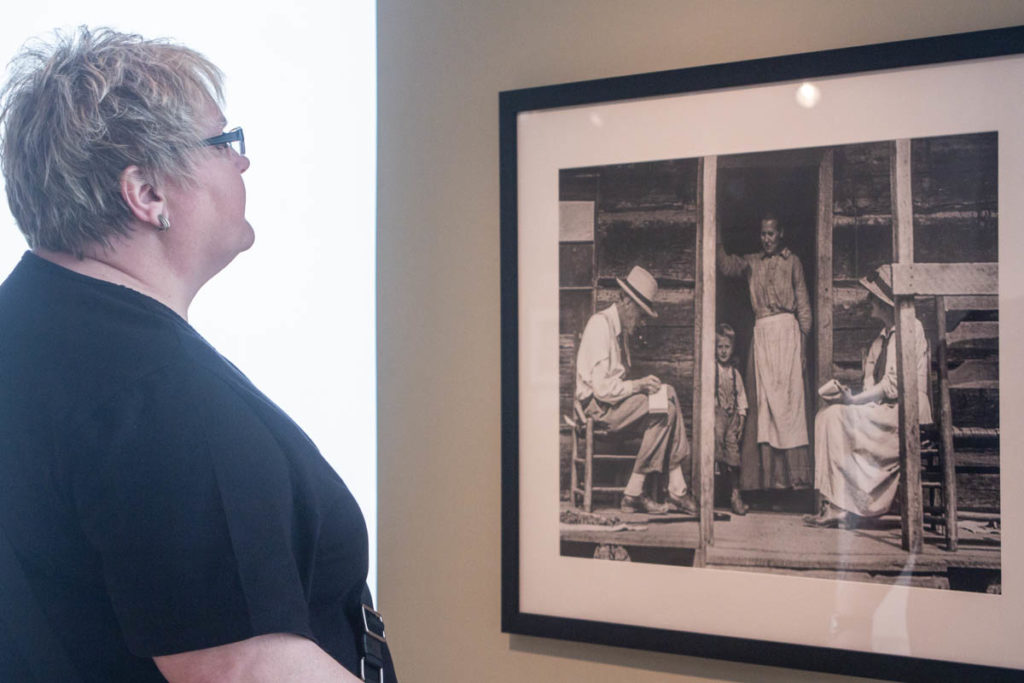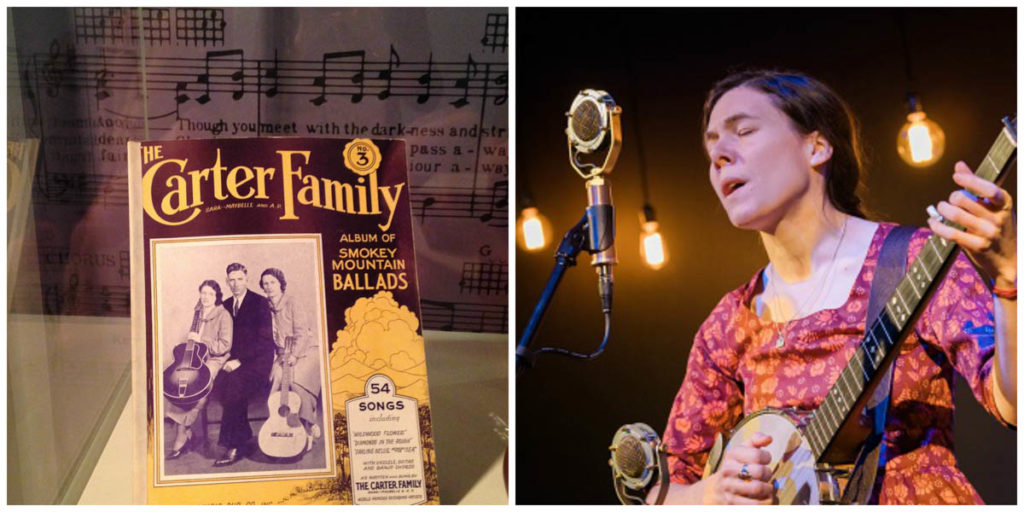There is a book on the shelves in the museum’s Blue Stocking Club Learning Center that I come back to time and time again – Wayfaring Strangers: The Musical Voyage from Scotland and Ulster to Appalachia by Fiona Ritchie and Doug Orr. This wonderful book chronicles the history of the ballad from its origins to its place in our very own Appalachian Mountains. Beautifully written, with equally beautiful artwork and photographs, it tells the story in a meandering manner, taking the reader down old and new roads, mimicking the ballad journey itself.

The story of ballads is greater than what can be covered in a blog post, but I want to share what I have learned from Wayfaring Strangers, giving readers a small glimpse into that history in a fairly simplistic and straightforward manner. However, I encourage you to also read this book to learn more; it captured my heart – and it is sure to capture your heart too!
Ballads go further back in pre-recorded history than initially thought, to the seafaring civilizations sharing cultures via storytelling and music. There is no one single point of ballad origin; rather points as disperse as Scandinavia, Germany, Western Europe, Scotland, Ireland, England, and the Mediterranean all had a role to play. For example, there is an old-style epic narrative performed in Connemara, Ireland that is nearly identical to a Bedouin style.
Scottish poet, folklorist, and songwriter Hamish Henderson called the ballad journey the “carrying stream,” a perfect analogy for its meandering ways through ages, cultures, and configurations. Ballads were an oral tradition for disparate, often illiterate populations wherein stories, news, commerce, commentary, protest, and dance could be part of the delivery. As they traveled, ballads were subject to many influences and variations, both to their words and music, and often the same ballad may have different tunes or one tune may be associated with several different ballads. Over time and space, it was the best lyrics and tunes that continued along the carrying stream.

As to the Scots-Irish ballad tradition that is quite familiar in the Appalachians, it begins with a Nordic-Baltic influence arriving early on the Scottish shores. Northeast Aberdeenshire is considered the cradle of Scottish balladry with distinct language, customs, and folklore created out of isolation and seafaring influences. Western Scots and Irish people shared their traditions as well via the short sea route between them, and the Scottish and English border counties added further influences, all contributing to the oral-to-written evolution.
The ramifications of politics and palace intrigue over the course of the ballad history were many and varied, and the resulting diaspora impacted the story. One such dispersing was the Scots to Ulster Ireland and then on to the American colonies. It is this carrying steam that brought the ballad tradition to our mountains. The majority of these immigrants arrived at various ports northward and traveled down the Wilderness Road to the Appalachian Mountains. The pioneers settled in valleys and coves throughout the mountains, bringing their musical heritage with them – a heritage that merged with other traditions, styles, and songs found in the Appalachians including those of Native Americans, enslaved peoples from Africa, and other ethnic groups. It is this mixing that eventually evolved to be recognized as old-time country music.

As Wayfaring Strangersnotes: “Music provided the social fabric, creating a sense of community amid isolation and reinforcing identity. That said, while the Scots-Irish origin is clearly the dominant one, it is the braiding and weaving of European, African and indigenous American influences that creates the unique tapestry of Appalachian music.”
The long tradition and the evolution of ballads is further underlined by Bascom Lamar Lunsford, western North Carolina Minstrel of the Mountains, when he tells us “… that though the words changed from country to country, and generation to generation, even from valley to valley in the same range of hills, the essence of the music changed not at all. It formed a link, unbroken, back through time, tying to the past.”
Music was – and still is – reward at the end of a long day’s work, something to share in front of a winter fire or on a summer porch, and an act of community as voices are raised together at barn raisings, harvests, market days, and other events and occasions. And, of course, this included the teaching of these traditions to succeeding generations of children and grandchildren.

This ballad heritage was found at the Bristol Sessions in some of the songs, which were then shared through the recordings on a much wider scale. This music was a continuation of the carrying stream, and that musical migration continues through today’s carriers and tradition bearers – they too are immersed in the carrying steam. And old-time country music and the storytelling it is a part of, along with music festivals the world over and our museum visitors from every state and over 44 countries, all testify to that continuing journey.


